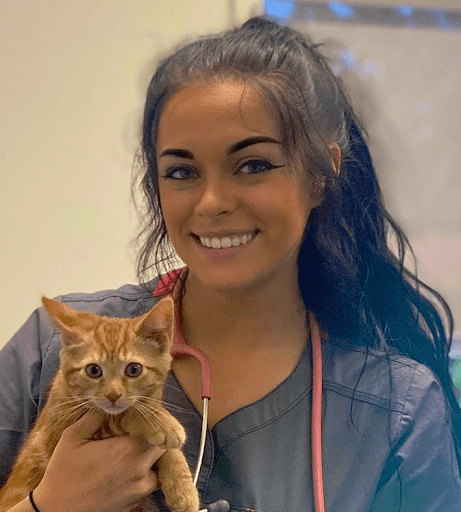Caring for your dog’s teeth is a crucial part of routine care! Dogs can’t brush their own teeth, unfortunately, so that part is left to us. Over 80% of dogs above the age of three have active dental disease. Small breed dogs are especially prone to dental disease. What can we do as pet parents to help prevent dental disease? The best way is with routine brushing and routine dental check-ups by your veterinarian.
Dental disease might not sound all that bad, but just think about when you have a sore tooth. It can be quite painful for our furry companions, too! Dental disease, when left untreated, can also affect vital organs, such as the heart and the kidneys. Prevention is the best medicine, so let’s talk about some of the great dental products that are on the market today that make dental care as easy as possible.
** Remember, human toothpaste should not be used for dogs!**
- Formulated for dogs
- Dairy-free
- Chicken-flavored
- Helps fight bad breath and tartar buildup
- Package comes with enzymatic toothpaste and dental chews
How to use: Put a strip of toothpaste down the groove of the dental chew, and let your dog enjoy!
- Formulated for dogs and cats
- Chicken-flavored
- Helps fight bad breath and tartar buildup
- Toothpaste, dental chews, dual-ended toothbrush, and finger brush available
- Starter kit contains toothpaste, dual-ended toothbrush, and finger brush
How to use the toothbrush: The dual-ended toothbrush has one larger side for large dogs and a smaller side for small dogs and cats. Apply a pea- to marble-sized amount to the desired side of the brush. Gently brush all sides of the teeth, if possible. Be careful not to irritate the gums with rough brushing. For the best results, brush daily.
How to use the finger brush: Apply a pea- to marble-sized amount to the bristled area of the finger brush, depending on the size of your pet, and put the brush over your finger. Use the finger brush just as you would use the toothbrush. With this method, use caution so that your pet doesn’t bite your finger in an attempt to eat the tasty toothpaste!
*If you cannot find a pet toothbrush, use a soft-bristled toothbrush for large dogs, and a child’s toothbrush for small dogs and cats.
If brushing doesn’t seem like a good option for you and your pet, try dental treats! The best dental treats have a VOHC (Veterinary Oral Health Council) seal of approval on the package. Here are a few VOHC-approved dental chews:
- Oravet Dental Hygiene Chews
- Purina DentaLife Daily Oral Care Dog Treats
- CLENZ-A-DENT Dental Sticks (Read The Daily Dog’s full review of CLENZ-A-DENT dental sticks here.)
Dental treats are best given daily. Though they don’t produce the same results as daily brushing, they are the next best thing. Check out The Daily Dog’s Dental Chews Buyer’s Guide here.
While we care for our pets’ dental health at home, this should never replace the need for dental exams by veterinarians. Pets should still have their teeth checked at least once a year to ensure there are no issues beneath the gum line.




